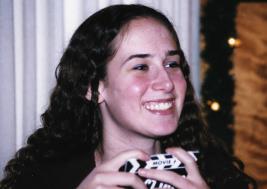Facts about Sudden Cardiac Arrest (SCA) and Automated External Defibrillators (AED)
-
In Loving Memory of Kimberly Anne Gillary ~ August 21, 1984 - April 3, 2000
The links or actions in the American Heart Association Adult Chain of Survival are:
- Immediate recognition of cardiac arrest and early access to the Emergency Medical Services System (EMS) by phoning 911
- Early CPR with emphasis on chest compressions
- Rapid defibrillation with an AED
- Effective advanced life support
- Integrated post-cardiac arrest care
Sudden Cardiac Arrest (SCA)
Automated External Defibrillators (AEDs)
- Sudden cardiac arrest occurs over 700 times daily in the United States, resulting in approximately 250,000 deaths per year.
- The current survival rate for cardiac arrest is less than 5%.
- The cause of most cardiac arrests is an irregular heart rhythm (arrhythmia) called ventricular fibrillation.
- The normal pumping of blood no longer occurs once ventricular fibrillation begins.
- Death usually follows unless responders restore a normal heart rhythm by shocking the heart within 5-7 minutes.
- Sudden cardiac arrest can occur at any age.
- Recent statistics show an alarming number of sudden cardiac deaths among school aged children and young adults.
(Source: The American Heart Association)
- The Center for Disease Control estimates 3,000 people between the age of 15-34 die of SCA each year.
- An AED is a device used to administer an electric shock through the chest wall to the heart. Built-in computers assess the patient's heart rhythm, judge whether defibrillation is needed and then administer the shock. Audible and/or visual prompts guide the user through the process.
- AEDs can restore a normal heart rhythm in sudden cardiac arrest victims.
- For each minute without defibrillation, a victim's chance of survival decreases by 7-10%.
- The ONLY treatment for sudden cardiac arrest is defibrillation. Without this, the victim will die.
- Lightweight, portable, affordable AEDs are now available and becoming increasingly common in schools.
- Adequate placement of AEDs can potentially save 66,000 lives annually.
- Most AEDs are designed to be used by non-medical personnel.
- The AED will not deliver a shock unless it is necessary.
- Michigan has a Good Samaritan Law which protects persons who voluntarily render emergency care from liability unless they are grossly negligent.
- AEDS SAVE LIVES!
(Source - The American Heart Association)
100% of all donations are used
to purchase AEDs and training
for Michigan Schools.
The Kimberly Anne Gillary Foundation




